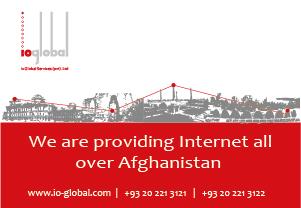New Delhi and Moscow are finalising the “the transfer of four Russian-made Mi-25 helicopters” to Kabul. According to an official source, “the decision is already done” and the “actual transfer and delivery” of the helicopters will take place in a month’s timeii. As a regional power and Afghanistan and positively respond to the defence and security needs of the Afghan government.
It is imperative for New Delhi to boost the security and defence capabilities of the Afghan national armed forces.
Afghans have sanguine expectations to receive New Delhi’s renewed commitment towards enhancing security and defence cooperations.
Why is an active indian military involvement in Afghanistan a strategic necessity for the two countries?
The strategic realities of the surrounding region, brought Kabul and New Delhi to sign a strategic partnership agreement in October 2011. In accordance with the agreement, New Delhi is committed to the “training, equipping, and capacity building” of the Afghan national security and defence forces.
Based on this landmark accord and facing Washington’s unwillingness to genuinely equip Afghan national armed forces, president Hamid Karzai, in May 2013, presented a “wish-list” to New Delhi asking for lethal and non-lethal weaponry including military helicopters, medium-lift aircraft, tanks, 105 mm howitzer artillery and etc.
As an aide to the president, during the May 2013 visit to New Delhi, I observed Karzai’s desire to encourage Indian leadership for a more active role in the region’s geopolitical stability. He was stressing that India’s – as well as of the region’s – security is tied to a stable Afghanistan. India should transform itself to a more credible regional actor.
But wary of a Pakistani reprisal and an unsupportive US reaction, under prime minister Manmohan Singh, the previous Indian government was hesitant to fulfil Kabul’s “wish-list” at that time. Instead, between 2004 to 2014, India continued to lean more towards a soft-engagement in Afghanistan; providing more than $2 billion to Kabul mainly for humanitarian assistance, infrastructure and capacity building projects.
After Karzai’s May 2013 visit, The Indian Express wrote: “India needs to balance its stakes in Afghanistan against the potential reaction from Pakistan.”
New Delhi, seemingly, had left regional affairs in its neighbourhood to the United States. Though New Delhi could have been America’s bona fide ally in the war on terror, it was marginalised as Washington, for its Afghan strategy, relied more on Islamabad.
Indians soon perceived that Pakistan’s ever-existing paranoia about India’s influence in Afghanistan, has led Washington to be “actively discouraging India from assuming a higher profile in Afghanistan” iv.
Now, the changing ground realities of Afghanistan seem to have made Prime Minister Narendra Modi’s government to reconsider their military engagement with Afghanistan. By supplying attack helicopters from the old Kabul’s wish-list, New Delhi is practically building on a foundation laid by the former president of Afghanistan.
Modi’s government seems to have reassessed its regional objectives realistically and is now upgrading New Delhi’s security role in Afghanistan.
According to the Indian ambassador to Afghanistan, Amar Sinha, the Afghan national security advisor, Hanif Atmar’s upcoming visit to New Delhi will “focus on reviewing the bilateral cooperation in all sectors”, besides the situation in the region, “the peace process and the outlook of major powers”.
Afghanistan’s deputy foreign minister, Hikmat Karzai, will be also visiting New Delhi later this month. For all intents and purposes, India has successfully engaged the Afghan national unity government after a year of confusion and blurriness. Ghani’s government has seemingly come to the realisation that it is a strategic blunder to distance itself from New Delhi.All that is good news for Afghanistan, India’s second largest recipient of development assistance.
But India – as a responsible regional player – also needs to work with regional allies. As violence by new brands and designs of terrorist groups intensifies in the region, ensuring stability in Afghanistan will contribute to the regional stability, which, for India as a regional power, is of a fundamental interest. Therefore, New Delhi should coordinate its Afghan policy and enhance its cooperation with Russia, China and Iran. In spite of their divergent interests in the region, Russia, China, India and Iran should be glued to strongly support Afghanistan and jointly fight the current political menace: terrorism.
Pakistan needs not worry about the enhancement of military cooperation between Kabul and New Delhi. Characterised by realism, Islamabad also has growing stakes in peace and stability in Afghanistan. Instead of a terra firma for rivalry, Afghanistan should become a theatre for confidence building between New Delhi and Islamabad.
Obsessed with its growing “war on terror”, Washington D.C. should officially welcome and support India’s momentous gesture to deliver combat helicopters to Kabul.
As Alyssa Ayres, a former state department deputy assistant secretary for South Asia and now senior fellow at the Council on Foreign Relations (CFR) puts it: “India has been an extremely helpful development, trade, training, and investment partner for Afghanistan and its role should be encouraged.”
View expressed in this article are of the author’s own and do not necessarily reflect Pajhwok’s editorial policy. Source: DailyO.in








GET IN TOUCH
NEWSLETTER
SUGGEST A STORY
PAJHWOK MOBILE APP